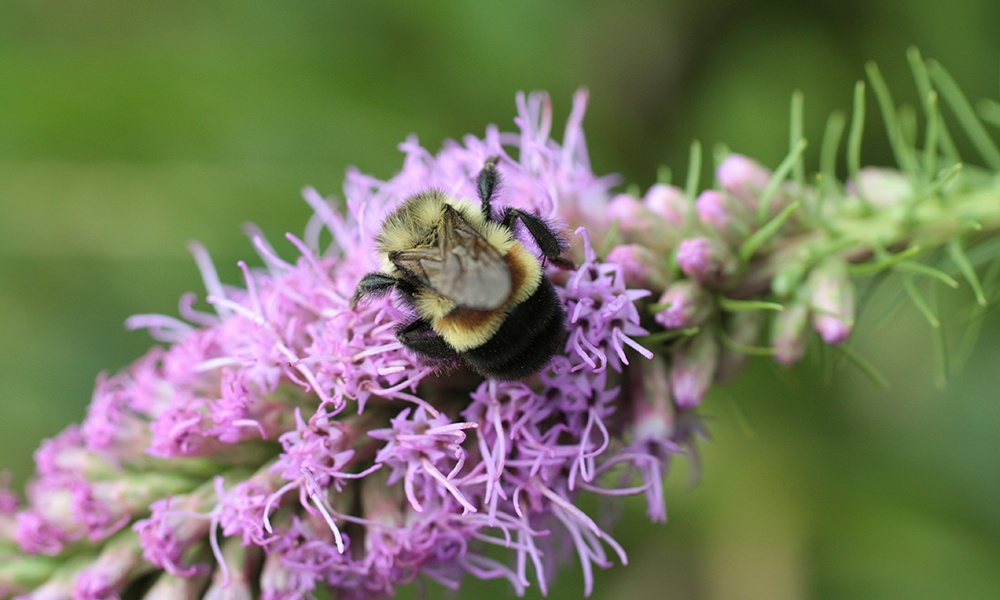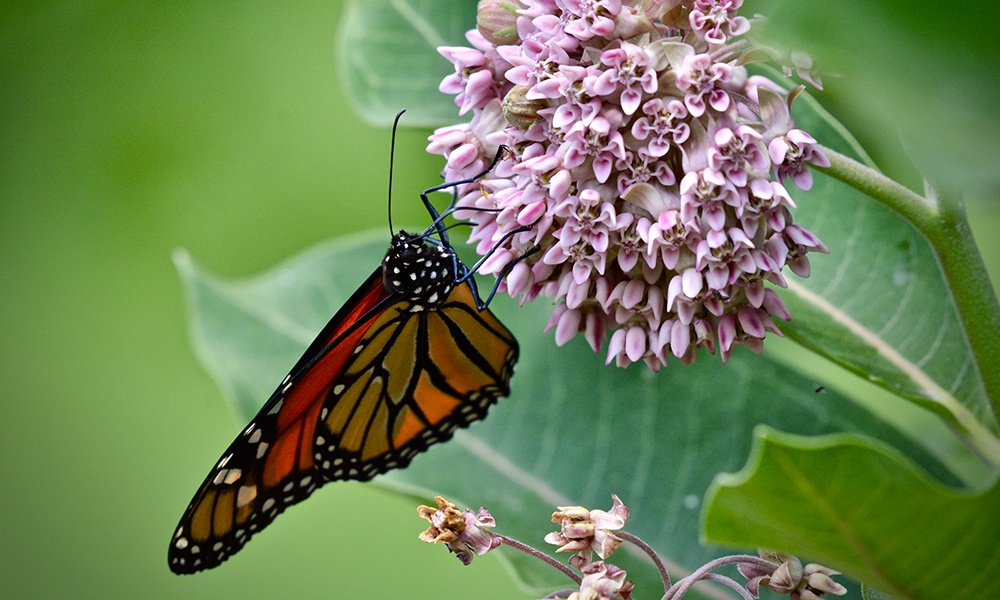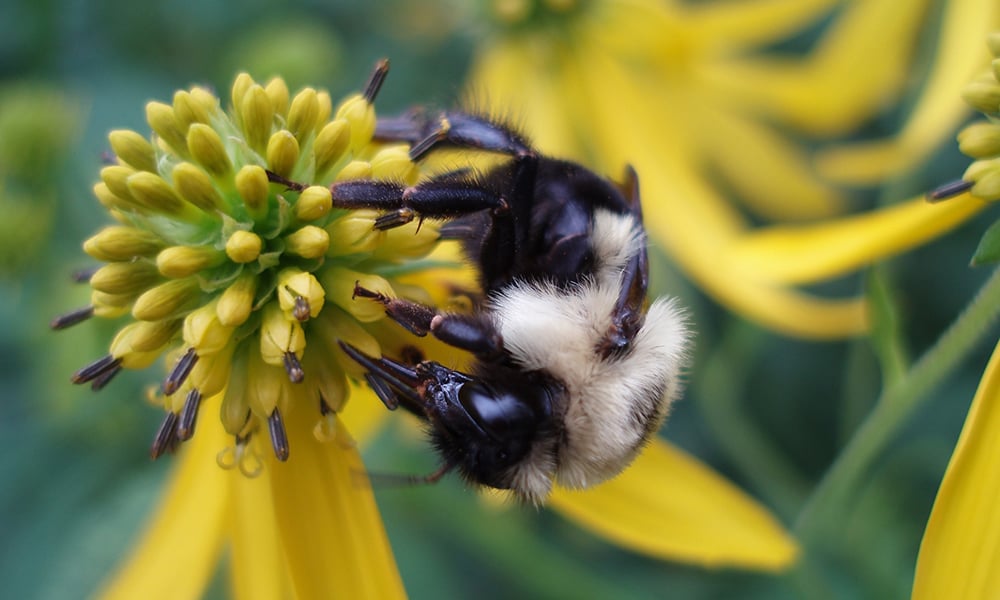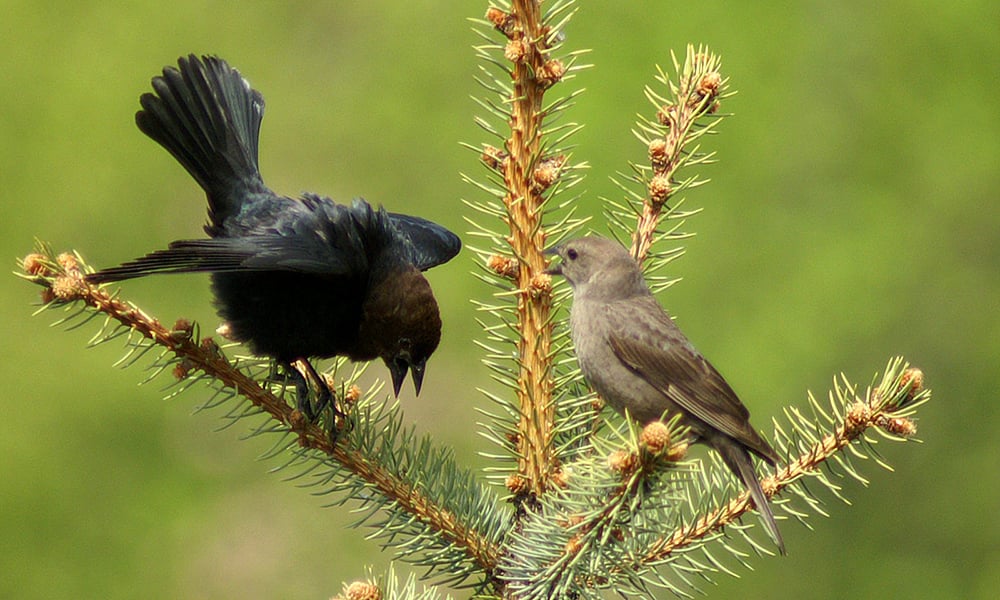
Valentine’s Day is a day we celebrate relationships but even more than that, it is a day to celebrate love.
Most times we tend to focus on the romantic kind of love on this day, but it can also be a day to celebrate love in our friendships, for a family member, a neighbor, or even for the barista who makes your coffee drink every morning.
Love comes in many forms, but ultimately is a driving force in our human relationships. What about love in nature? Do relationships in the wild reflect love?
Relationships in the Wild
Scientifically, relationships in nature are called symbiotic relationships. Organisms in nature form relationships not based on love but rather survival.
So while we are giving out heart-shaped notes and candy to show our love for one another, relationships in nature involve a very different foundation. The three most studied symbiotic relationships can be divided into three categories: commensalism, mutualism, and parasitism.

Monarch butterfly larvae extract a toxin called cardiac glycoside from a specific species of milkweed to ward off predators in an example of commensalism.
Commensalism
Commensalism is a relationship between two different species where only one of them benefits. The other species is neither helped nor harmed. The commensal, or species that benefits from this relationship, may get food, shelter, support, or simple locomotion from the host species.
During its larval stage, the monarch butterfly attaches to a specific species of milkweed that contains a toxin called cardiac glycoside.
Monarch larvae extract this toxin and store it in their bodies for life, even after they develop into butterflies. This toxin does not negatively affect the butterflies, but birds find it very distasteful and thus avoid eating the butterflies. Extracting this toxin does not affect the milkweed plant in any way.

A bumblebee feeds on nectar while pollinating flowers in an example of mutualism.
Mutualism
Mutualism is the opposite of commensalism. It’s where organisms of different species benefit from each other.
The relationship between bees and flowers is an example of mutualism. Bees fly from flower to flower feeding on nectar. When they land on these flowers, pollen from the flowers sticks to the bees’ bodies. When they land on the next flower, some of the pollen from the first flower rubs off on the next in a process known as pollination.
Pollination is a necessary step for reproduction in the plant. This allows the flowers to reproduce and the bees to feed.

A male (left) and female cowbird. The female cowbird lay its eggs in other species' nests so the host raises the cowbirds' young in an example of parasitism.
Parasitism
Parasitism involves one organism benefiting from the relationship to the detriment of its host. The brown-headed cowbird is a species that practices a form of parasitism.
Rather than build their own nest, cowbirds lay their eggs in other species’ nest. The host species is harmed because they use their energy raising the cowbird young rather than their own. Sometimes, the cowbird will even kick the host species’ eggs out of the nest, causing the host to raise only the cowbird’s young. So the host carries on the cowbird’s genes rather than its own.
These three symbiotic relationships define how species interact with each other in nature, and survival is the driving force in these relationships. The inner workings of nature can be complex but are much different than our human relationships. Nonetheless, this Valentine’s Day we can celebrate all kinds of relationships, including those motivated by love or survival.